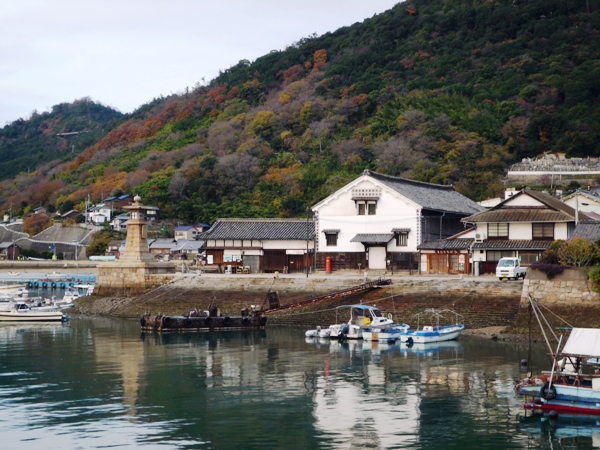Waseda University Institute of Comparative Law
Noticeable Judicial Precedent
Report on Litigation Involving the World Heritage Site at Tomo-no-ura |
Professor and lawyer Masaharu HIOKI |
|
Tomo-no-ura, Fukuyama City, Hiroshima Prefecture, is an important harbor that has prospered since the ancient Man-yo era as a good natural harbor and strategic point for Setouchi marine transportation. The area accommodated Joseon envoys during the Edo era. Tomo-no-ura is a globally important harbor heritage site where most of the medieval harbor facilities of all-night lights, gangi (stepped pier), hato (dock), and tadeba (one of the facilities for the maintenance of wooden vessels), still exist. The whole neighborhood of Sensui-jima outside the port of Tomo-no-ura is picturesque and thus was designated a place of scenic beauty by the Act on the Protection of Cultural Properties in Japan. Furthermore, the townscape of the remaining marine transportation and historic buildings preserves the look of the past when the harbor was prosperous (during dispute, the area was designated a Preservation Area for Groups of Historic Buildings). Tomo-no-ura is a historically and culturally important area and is considered to have value as a world heritage site; however, Fukuyama City, Hiroshima Prefecture, proposed the construction of a bypass by reclaiming a part of the harbor and constructing a bridge, since it is difficult to build a new road because of the topography of the mountains that rise sharply from the sea. Although we concede that a new road is necessary because automobile traffic is increasing, the old townscape has to be preserved. With regard to such a plan, worldwide opposition was voiced; ICOMOS advised the town three times to stop the plan because important and cultural landscapes would be destroyed, but the local government strengthened the movement for realization of the plan as of about 2006 (9th resolution of the 15th General Assembly of ICOMOS). Therefore, in April of 2007, local residents opposing the bridge construction plan decided to ask for an injunction to stop the reclamation license (an administrative litigation) prior to the application for such a license from the local government. Based on the fact that the reclamation construction would destroy an important cultural landscape worthy of designation as a world heritage site, the plaintiffs, living in Tomo-no-ura, assert that they have legal standing to initiate litigation with regard to the landscape benefit, that the reclamation project would damage such landscape benefit and violate the public water reclamation license, and that therefore the reclamation project should be suspended to avoid significant damage due to landscape destruction. The Hiroshima District Court conducted proceedings 11 times; on February 3, 2009, the district court rendered its judgment, which accepted the plaintiffs' assertions and approved the injunction as of October 1. The decision to approve the injunction regarding the public works project was the first case after the Administrative Case Litigation Act was revised, and the formality of the action for injunctive relief was established. At the same time, the decision was significant in that residents across a wide area were approved to have standing to sue with regard to a civil landscape benefit when the court decided that the reclamation license infringing the benefit was illegal. The prefectural government appealed the judgment; however, they set up a council to review the project by listening to the opinions of both supporters and the opposition party, and postponement of the proceedings after the appeal has continued. On June 25, 2012, the Hiroshima prefectural governor, in consideration of the details of the hearings of the council, decided to stop the reclamation project and study the construction of a tunnel on the mountain side as an alternative. |
